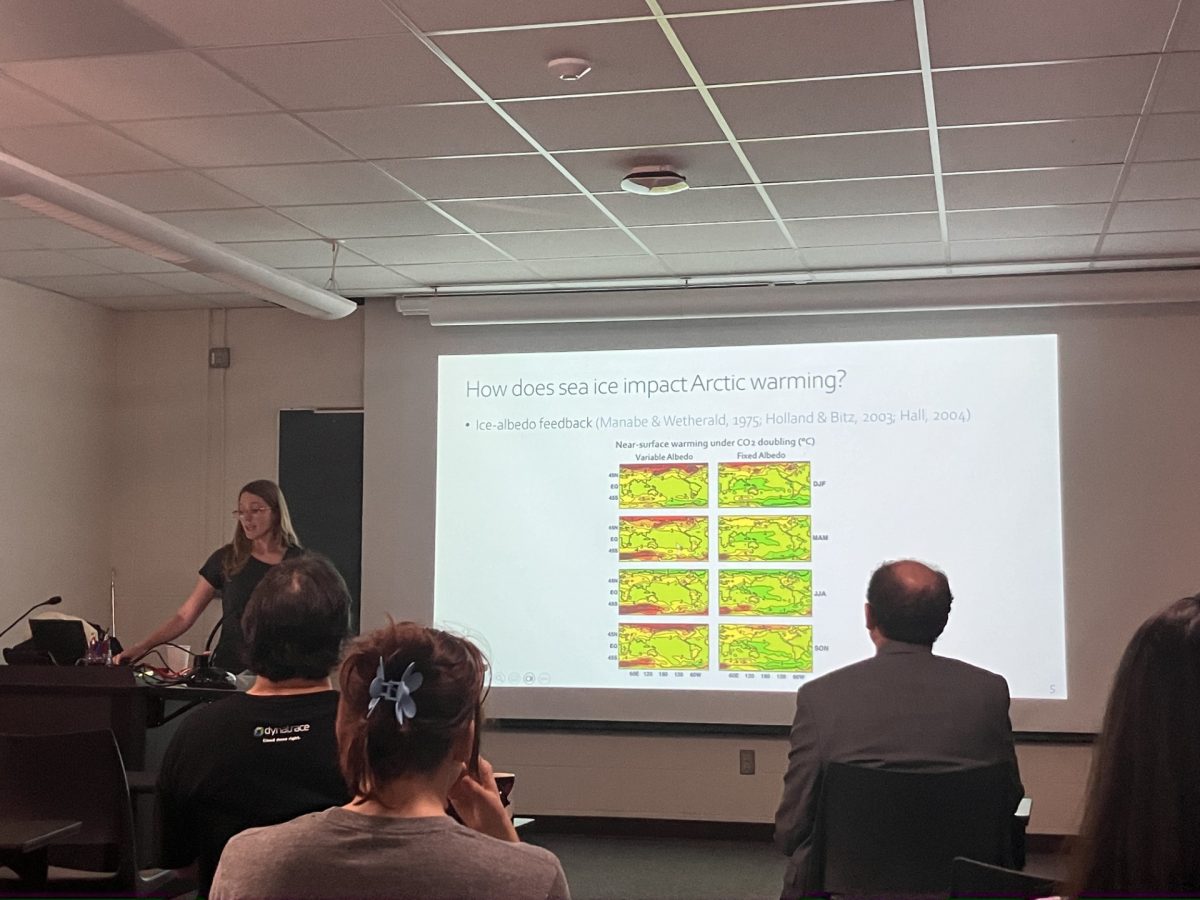National Oceanic and Atmospheric Administration Climate and Global Change Postdoctoral Fellow, Lily Hahn, presented her work on climate models as part of the Atmospheric and Oceanic Sciences Colloquium Series. Her presentation focused on the impacts of sea ice on surface warming and the Atlantic Meridional Overturning Circulation on global temperatures.
Hahn’s work focuses on determining what factors contribute to near-surface warming in the Arctic. The strongest impact is the ice-albedo effect, where ice reflects more sunlight than liquid ocean and absorbs less heat. Lapse-rate feedback, a phenomenon where greenhouse gasses trap heat from reflected sunlight and then release it slowly into the ocean, stood out in models that compared scenarios with and without ice. Hahn found that the factor helped align the model’s temperature patterns with ones found in the Arctic.
Understanding these factors are important for predicting how the Arctic will warm in the future with changing conditions, like less sea ice and increased greenhouse gasses in the atmosphere, Hahn said.
The second part of Hahn’s presentation focused on the uncertain role of AMOC in global temperatures as the current weakens. AMOC is responsible for large amounts of ocean regulation in the Atlantic and globally, by regulating temperatures in the Arctic and cooling warm ocean water coming from the Gulf of Mexico and returning colder, salty water into the Atlantic ocean.
In climate models, it is a source of uncertainty for global warming models, Hahn said. Different models have different variable ranges for AMOC and figuring out which factors narrow these variances and more accurately predict both global and local warming Hahn said.
Modeling the changes in AMOC are also important for predicting ocean surface temperatures, atmospheric temperatures, and cloud feedback, which all go back into modeling the impact of AMOC on global warming, Hahn said.



